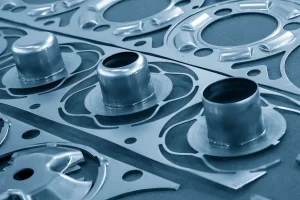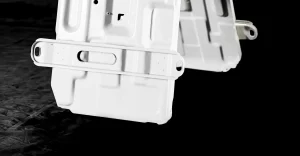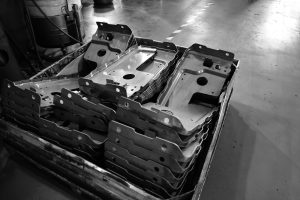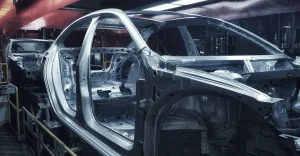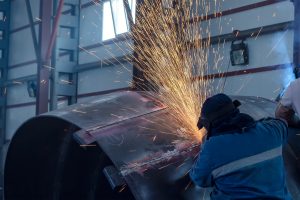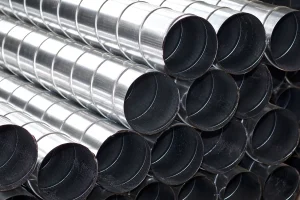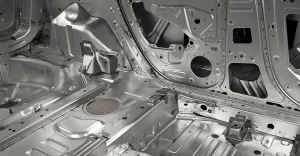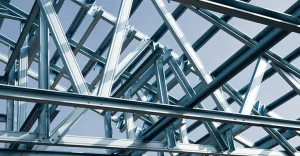Cold Reduced
From 0.5mm to 3mm in a range of forming grades and high strength low alloy steels.
Hot Rolled
From 1.5mm to 12mm in a range of forming, structural grades and high strength low alloy steels.
Metallic Coated
From 0.5mm to 5mm in a range of forming, structural grades and high strength low alloy steels.
Hot Rolled
Hot rolling is a process where steel is rolled at high temperatures, above 1700°F, which is above its recrystallisation temperature. Large steel slabs, billets, or blooms are heated and passed through rollers to achieve the desired shape and thickness. At these temperatures, the steel is easier to form and can be made in larger sizes.
Hot rolled steel has a rougher surface and less precise dimensions compared to cold rolled steel. The surface scaling, formed as the steel cools, can be removed later using acid baths in a process called pickling.
Hot rolled steel is cheaper than cold rolled steel because it is made without delays or reheating, reducing production costs. However, it is less suitable for applications needing a smooth finish or tight dimensional accuracy.
Cold Reduced
Cold rolled steel is essentially hot rolled steel that has had further processing comprising of both continuously-annealed and batch-annealed products. The steel is processed further in cold reduction mills, where the material is cooled (at room temperature), followed by annealing and/or temper rolling.
This process will produce steel with closer dimensional tolerances and a wider range of surface finishes. The term “cold rolled” is mistakenly used on all products when the product name actually refers to the rolling of flat rolled sheet and coil products.
The advantages of cold rolled steel include its superior surface finish, formability, lighter and stronger products and tighter dimensional tolerances compared to hot rolled steel.
Cold rolled steel is suitable for applications where aesthetics and precise dimensions are important. It is commonly used in applications requiring high precision and a high-quality finish, such as in domestic appliances, automotive components, tubes and sections, construction and building components and furniture.
Metallic Coated
Galvanised steel is a process of applying a protective layer of Zinc to steel to prevent rust and corrosion. There’s a wide range of metallic coated products available to meet the requirements of different sectors.
Hot dipped galvanising is the most common method in which a Zinc coating is applied in a hot dip process using a bath of molten zinc. This method offers very good corrosion resistance with good forming properties.
Hot dipped galvanised has a strong thick coating and is known to have a very long life expectancy of between 20 to 50 years suitable for outdoor applications particularly in the building industry to ensure durability and longevity.
Electrogalvanised steel is a process where a thin layer of zinc is applied using an electrochemical procedure where the steel strip passes through several electrolytic cells successively. A current of electricity is passed through the electrolyte solution to cause the zinc to be deposited on the metal surface. The result is a uniform, thin, and smooth layer.
It is generally available with a thinner coating and a life expectancy less than hot dipped galvanised and therefore not suitable for outdoor applications.
However, Electrogalvanisation produces an excellent uniform smooth finish with good workability, weldability and is used in typical applications such as home appliances, metal furniture and automotive parts.

